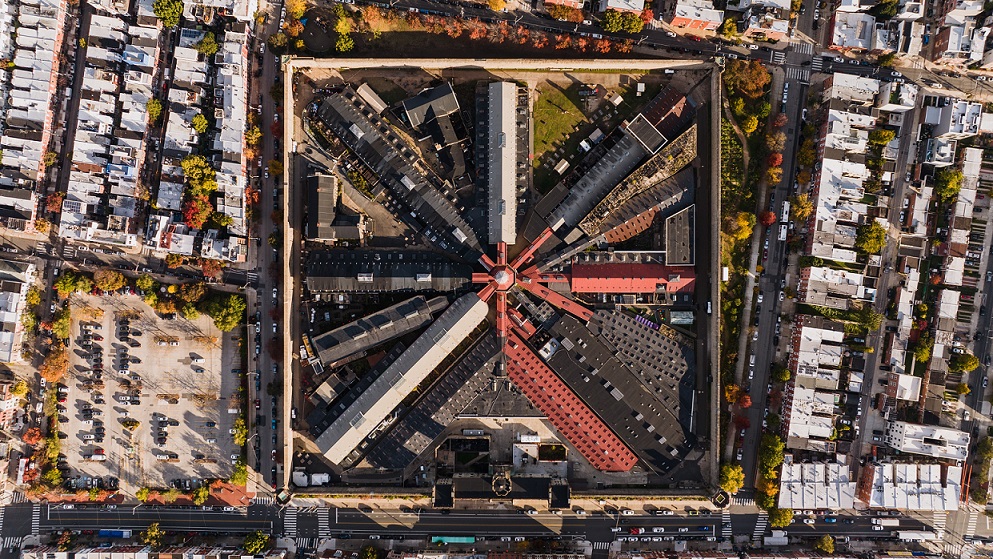Behind the Bars of History: The Legacy of Eastern State Penitentiary
Eastern State Penitentiary is a place that has a storied and complicated history. Opened in 1829, the prison was one of the first of its kind in the world. It was designed to use a new philosophy of incarceration that was meant to be more humane and effective than the brutal methods that had been used in the past. But over the years, the prison became a place of misery and desperation for its inmates. Today, Eastern State is a National Historic Landmark that attracts visitors from all over the world who come to learn about its legacy.
The concept behind Eastern State Penitentiary was developed by a group of reformers who believed that the harsh conditions of traditional prisons only made inmates more prone to criminal behavior. They envisioned a new kind of institution that would provide a peaceful and introspective environment that would encourage inmates to reflect on their crimes and repent. The design of the prison was meant to reflect this philosophy. Each cell was isolated from the others, with thick walls and a small window that allowed a limited amount of light to filter in. Inmates were kept in their cells for 23 hours a day, with only one hour of exercise in a small, walled courtyard.
At first, the new system seemed to be working. Inmates were less likely to riot or attempt to escape, and the recidivism rate was lower than in other prisons. But over time, the isolation and monotony of life in Eastern State took its toll on the inmates. Many of them developed mental illnesses, and some became violent or suicidal. The prison’s administration was ill-equipped to deal with these problems, and the conditions inside the prison deteriorated.
One of the most famous inmates at Eastern State was Al Capone. The notorious gangster was incarcerated there for eight months in 1929 and 1930. Capone’s cell was furnished with fine furniture and a radio, and he was allowed to receive visitors and gifts. But even Capone found life in Eastern State difficult. He suffered from syphilis, which went untreated for much of his time in prison, and he was plagued by rumors of assassination attempts. Capone was eventually transferred to another prison, but his stay at Eastern State is still remembered today.
In the 20th century, Eastern State became known for its brutal conditions. Inmates were subjected to beatings, malnutrition, and forced labor. The prison’s staff was underpaid and understaffed, and many of them took out their frustrations on the inmates. The overcrowding and squalor of the prison led to a series of riots and protests, and the prison’s reputation was irreparably damaged.
Eastern State Penitentiary was finally closed in 1971, and it stood abandoned for many years. In the 1990s, a group of preservationists took on the task of restoring the prison and turning it into a museum. Today, Eastern State is a popular tourist attraction that provides visitors with a glimpse into the history of American prisons.
Visitors to Eastern State can tour the prison and see the restored cells, exercise yards, and administration buildings. They can learn about the history of the prison and the inmates who lived there, and they can see the artifacts that tell the story of life inside the walls. There are also exhibits that explore the larger issues surrounding incarceration in America, including the racial disparities in the criminal justice system and the impact of mass incarceration on communities.
One of the most striking features of Eastern State is the artwork that covers the walls of many of the cells. In the 1990s, the prison began hosting an annual art installation called “Prisoners’ Voices,” in which artists created works inspired by the stories of former inmates. These installations are still on display today, and they provide a powerful testament to the humanity of the men and women who were incarcerated at Eastern State. The artwork includes murals, sculptures, and multimedia pieces that highlight the struggles of the inmates and their search for meaning and purpose in a system that sought to dehumanize them.
In addition to the art installations, Eastern State also offers a range of educational programs for visitors. These include guided tours led by knowledgeable docents who can answer questions and provide insights into the prison’s history. There are also hands-on workshops and interactive exhibits that allow visitors to experience life inside the prison in a more immersive way.
Perhaps one of the most important aspects of Eastern State’s legacy is its role in shaping the conversation around criminal justice reform. The prison’s original founders had high ideals about the transformative power of incarceration, but those ideals were eventually overshadowed by the reality of the prison’s harsh conditions. Today, Eastern State serves as a reminder of the need for a more humane and just system of punishment.
As the United States continues to grapple with issues of mass incarceration and police brutality, the lessons of Eastern State are more relevant than ever. The prison’s history is a cautionary tale about the dangers of unchecked power and the importance of protecting the rights and dignity of all individuals, even those who have committed crimes.
Eastern State Penitentiary is a place of complex history and significance. It was founded on high ideals but ultimately fell short of its goals. Today, the prison serves as a powerful reminder of the need for a more just and humane criminal justice system. By visiting Eastern State, we can learn about the legacy of incarceration in America and take steps to create a better future for all.
